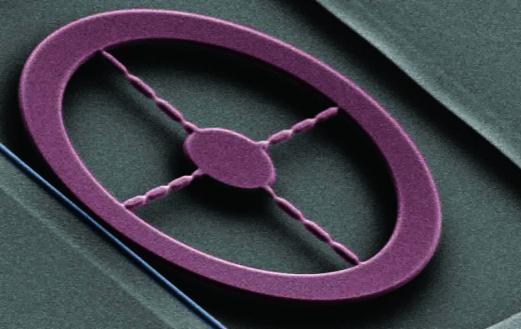With Mechanical Vibrations, Nanoscale Device Slows the Light Down

SEAS Engineers have invented a new on-chip optomechanical device that not only couples one optical mode to one mechanical vibration, but also couples two different mechanical vibrations to each other. This device significantly improves interaction efficiency between optical and mechanical particles. The improved efficiency can be used to substantially slow the speed of light, an essential capability for the development of a quantum chip.

“A number of different quantum platforms—such as photons of light waves or magnons of magnetic spin—can be used for transmitting and storing quantum information,” said Hong Tang, associate professor of electrical engineering, physics, & applied physics, and principal investigator of the research published January 14 in Nature Communications. “A hybrid system like ours that couples photons of light with phonons of mechanical vibration is advantageously positioned for a larger variety of applications.”
The device’s micro-wheel structure, made from aluminum nitride, acts like a whispering gallery, efficiently directing the light around the wheel and limiting photon dispersion. As the light and the wheel interact, the wheel exhibits two different vibrational modes: in “breathing mode,” the radius of the wheel expands and contracts; in “pinch mode,” the radius of the wheel remains the same while the width of the wheel expands and contracts.
Although each mode has been used previously in optomechanical devices, the Yale device is the first to couple the two mechanical modes directly, thereby increasing the complexity of the interactions between the light photons and the mechanical phonons. In this way, Tang’s team is able to use the mechanical vibrations to manipulate and ultimately decrease the speed of the light — a quantum interference effect known as electromagnetically induced transparency.
“Scholars attempting to create a quantum computing platform based on optomechanics are currently all running into the bottleneck of underperforming mechanical resonators,” said Linran Fan, a Yale engineering doctoral student and lead author of the paper. “Coupling the vibrational modes not only improves the mechanical resonance, but it also enables many more degrees of freedom to manipulate the light and slow it down further.”
Other authors of the article include King Y. Fong and Menno Poot.
The article is titled “Cascaded Optical Transparency in Multimode-Cavity Optomechanical Systems.”

